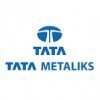
i
JSW Steel
Filter interviews by
JSW Steel Junior Engineer Electrical Interview Questions, Process, and Tips
JSW Steel Junior Engineer Electrical Interview Experiences
7 interviews found
I appeared for an interview before Apr 2024, where I was asked the following questions.
- Q1. HT < MOTOR PREVENTING MAINTENANCE
- Q2. TRANSFORMER & SAFETY DEVICE MAINTENANCE
- Q3. ACB & VCB MAINTENANCE
- Q4. OPERATION TIME ARE FAULT ATTEND
I appeared for an interview in Sep 2024, where I was asked the following questions.
- Q1. Tell about the motor
- Ans.
A motor is a device that converts electrical energy into mechanical energy, commonly used in various applications.
Types of motors include AC motors, DC motors, and stepper motors.
AC motors are widely used in industrial applications, such as conveyor belts.
DC motors are commonly found in toys and small appliances.
Stepper motors are used in precision applications like 3D printers and CNC machines.
Motors can be classified...
- Q2. What is armature
- Ans.
The armature is the rotating part of an electric machine, crucial for generating or converting electrical energy.
The armature consists of coils of wire wound around a core.
In DC machines, it carries the current that generates magnetic fields.
In AC machines, it interacts with the stator's magnetic field.
Examples include the rotor in a motor and the armature in a generator.
Interview Preparation Tips
I applied via Approached by Company and was interviewed before Sep 2023. There was 1 interview round.
(5 Questions)
- Q1. Power system Electrical machine Power electronics Digital electronics Power electronics
- Q2. PLC Programming Electrical drawing Automation VFD maintenance Distribution feeder maintenance HT$LT breaker maintenance Instrument maintenance
- Q3. Project management
- Q4. Transformer maintenance
- Q5. BasicElectrical
Interview Preparation Tips
What people are saying about JSW Steel






I applied via Approached by Company and was interviewed in Feb 2022. There were 2 interview rounds.

(5 Questions)
- Q1. Takniki raund ka upchar hai
- Q2. Round ek upchar karne hai
- Q3. Anubhavkarna ekexperiencehai
- Q4. Kary ke pratiVikashkarna
- Q5. Work progress electrical
Interview Preparation Tips
JSW Steel interview questions for designations
I applied via Campus Placement and was interviewed in Jan 2022. There were 3 interview rounds.

(2 Questions)
- Q1. What is circuit braker
- Ans.
A circuit breaker is an automatic electrical switch designed to protect an electrical circuit from damage caused by overload or short circuit.
It is a safety device that automatically interrupts the flow of current in a circuit when it exceeds a safe level
It is used to protect electrical equipment from damage due to overcurrent
It can be reset after tripping, unlike a fuse which needs to be replaced
It comes in different ...
- Q2. Type of motor,D.C and A.C MOTOR
- Ans.
DC motors and AC motors are two types of electric motors commonly used in various applications.
DC motors operate using direct current, while AC motors operate using alternating current.
DC motors are typically used in applications that require high torque at low speeds, such as in electric vehicles and robotics.
AC motors are commonly used in household appliances, industrial machinery, and HVAC systems.
DC motors are simp...
Interview Preparation Tips
Skills evaluated in this interview
I applied via Walk-in and was interviewed before Jun 2021. There were 4 interview rounds.

(3 Questions)
- Q1. Electrical theory and plc based question.
- Q2. Electrical and plc based question and answers.
- Q3. Electrical cable and motors.
(3 Questions)
- Q1. Why do u want to join our company
- Q2. What is ur achievement in previous company.
- Q3. What is ur salary expectation.
(1 Question)
- Q1. Salary and why ?
Interview Preparation Tips
I applied via Walk-in and was interviewed in Nov 2021. There was 1 interview round.
Interview Questionnaire
1 Question
- Q1. All electrical maintenance work, like motor, transformer, DOL,rdol,star delta,MV drive, LV drive, EOT crane
Interview Preparation Tips
Interview questions from similar companies

Junior Engineer Electrical Interview Questions & Answers
Jindal Stainlessposted on 26 Mar 2025
I appeared for an interview before Mar 2024, where I was asked the following questions.
- Q1. Tell me about 11kv transmission system
- Ans.
An 11kV transmission system is a medium voltage network used for distributing electrical power efficiently over short to medium distances.
Voltage Level: 11kV is considered a medium voltage level, commonly used in distribution networks.
Applications: Used for supplying power to industrial plants, commercial buildings, and substations.
Components: Includes transformers, circuit breakers, and overhead or underground cables.
...
- Q2. Tell me about differnec Between AC and DC Motors
- Ans.
AC motors use alternating current, while DC motors use direct current, differing in operation and applications.
AC motors are powered by alternating current, which changes direction periodically.
DC motors operate on direct current, providing a constant voltage and current flow.
AC motors are commonly used in industrial applications, such as fans and pumps.
DC motors are often found in battery-operated devices, like toys a...

Junior Engineer Electrical Interview Questions & Answers
Jindal Steel and Powerposted on 19 Sep 2024
I applied via Naukri.com and was interviewed before Sep 2023. There was 1 interview round.
(2 Questions)
- Q1. What is generator
- Ans.
A generator is a device that converts mechanical energy into electrical energy.
Generates electricity through electromagnetic induction
Common types include diesel generators, gas generators, and wind turbines
Used in power plants, homes, and businesses for backup power
- Q2. What is transformer
- Ans.
A transformer is a device that transfers electrical energy between two or more circuits through electromagnetic induction.
Consists of two coils of wire, known as primary and secondary coils
Primary coil receives electrical energy and creates a magnetic field
Magnetic field induces a voltage in the secondary coil, transferring energy
Used to step up or step down voltage levels in power distribution
Examples include power tr...
Interview Preparation Tips
Skills evaluated in this interview

Junior Engineer Electrical Interview Questions & Answers
Jindal Steel and Powerposted on 21 Dec 2022
I applied via Approached by Company and was interviewed in Nov 2022. There were 3 interview rounds.
(1 Question)
- Q1. About the resume and salary detail and company police and ethics related things
After job description will get relateble test
(1 Question)
- Q1. After amplitude test will going to the final round of technical experience tests and related discussions
Interview Preparation Tips
Iam strong believe that I can deliver the good product in professional carrier
JSW Steel Interview FAQs
Tell us how to improve this page.
JSW Steel Interviews By Designations
- JSW Steel Assistant Manager Interview Questions
- JSW Steel Graduate Engineer Trainee (Get) Interview Questions
- JSW Steel Deputy Manager Interview Questions
- JSW Steel Junior Engineer Interview Questions
- JSW Steel Assistant Engineer Interview Questions
- JSW Steel Manager Interview Questions
- JSW Steel Mechanical Engineer Interview Questions
- JSW Steel Senior Engineer Interview Questions
- Show more
Interview Questions for Popular Designations
- Electrical Engineer Interview Questions
- Electrical Supervisor Interview Questions
- Electrical Technician Interview Questions
- Assistant Electrical Engineer Interview Questions
- Electrical Maintenance Engineer Interview Questions
- Diploma Electrical Engineer Interview Questions
- Manager – Electrical Interview Questions
- Electrical Maintenance Technician Interview Questions
- Show more
JSW Steel Junior Engineer Electrical Interview Process
based on 6 interviews
Interview experience
Interview Questions from Similar Companies
Fast track your campus placements
JSW Steel Junior Engineer Electrical Reviews and Ratings
based on 22 reviews
Rating in categories
|
Assistant Manager
3.2k
salaries
| ₹3.6 L/yr - ₹12.9 L/yr |
|
Junior Engineer
2.3k
salaries
| ₹2 L/yr - ₹5.5 L/yr |
|
Deputy Manager
1.7k
salaries
| ₹5.6 L/yr - ₹20 L/yr |
|
Manager
1.1k
salaries
| ₹7 L/yr - ₹22.5 L/yr |
|
Senior Engineer
1k
salaries
| ₹3 L/yr - ₹10.6 L/yr |

Tata Steel

Jindal Stainless

Jindal Saw

JSW Group
- Home >
- Interviews >
- JSW Steel Interview Questions >
- JSW Steel Junior Engineer Electrical Interview Questions


















